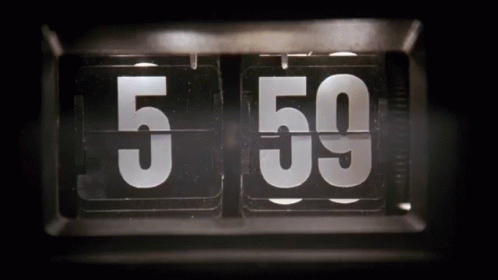Daily routines are important. According to research, they reduce stress and anxiety levels and improve mental health. I’ve never been a stickler for routines. But they usher consistency in my life and help me get important things done when I follow them.
In March 2020, all that changed. India went into an indefinite lockdown. Everyone’s morning, afternoon, and evening routines got thrown off balance. Locked inside their homes, people’s lives became a blur.
My life was no different. Before the lockdown, I would wrap up work by seven and sit for dinner. Next, I’d hit the gym and return by 9:30. Then I’d watch some TV, journal about my day, and go to bed.
The lockdown meant no gym. Nor could I step out of the house to work at my favorite coffee shops or meet friends. Locked inside, each day felt just like the previous one, as did each hour. Work dried up since clients put projects on hold.
Television and Netflix were the only aspects of my routine that remained. I didn’t have much else to do. So I started indulging more in them.
The idiot box turned me into an idiot.
I watched the TV all the time. 8 AM, 12:30 PM, 4 PM, 7:30 PM — the evening binge-watch sessions would continue until late at night.
I watched reruns of movies I hated, repeat highlights of sports until I learned them by heart, and even the so-called “news.” I sometimes dozed off while watching Netflix and woke to see three episodes finished while I slept.
Obviously, this would have cascading effects. My body and mind turned lethargic. I avoided exercise as if it was the virus itself. No amount of goading from my gym mates to join them on video call helped. My hunger declined. I stopped reading, writing, and playing my guitar. I felt like a zombie.
Each day, I said to myself, “This cannot go on.” Yet I followed the same routine. Life resembled a frustrating version of Bill Murray’s Groundhog Day.
One evening, the cable connection was down. I frantically called the service provider but couldn’t get through. Apparently, many people were trying to reach them.
Out of sheer desperation to kill boredom, I picked up my guitar. I wiped the dust off the strings and fretboard and began playing. For the first time in months, I felt good, like I faintly recollected who I was before the lockdown.
The next day, the cable connection was back up. So the guitar remained on the stand, untouched.
3 days later, something interesting happened. I didn’t feel like watching the idiot box. Instead, I picked up the guitar and played it until my fingers hurt. Then I played it some more before retiring to bed, happy.
I slept well that night.
The OFF Button
Turns out, the idiot box was the reason why I was ambling from one day to the next. (What a scientific breakthrough!)
Yes, COVID — 19 had disrupted my routine. But it didn’t have to disrupt my life. I still had the ability to do things I relished. In fact, a reduced workload meant I could invest more time in them.
So I pressed the OFF button on the television remote control and put aside my phone during the evenings. This created a void that meaningful, calming activities rushed in to fill. I returned to reading, meditating, and playing the guitar. Evenings felt relaxing which, in turn, induced better sleep.
A better evening ritual led to better morning rituals. I woke up refreshed and energized. Then I would grab a cup of tea and a good book, and sit in the path of the morning sun rays. While reading, my mind combined its stored thoughts with new ones and let the warm sun rays bake them together.
Reading floods my mind with ideas. What follows is a burning desire to write. So I began to write every day from breakfast until lunch. At first, the drafts were incoherent and scattered — lack of practice. Regardless, writing felt good. Slowly, I found my rhythm.
I also rediscovered the zeal to reach out to new clients. It took time, but I closed a few deals. Slowly, my days started filling up with meaningful work again.
I don’t always succeed.
There are still times when I binge-watch Netflix until three in the morning. I still waste evenings watching the idiot box. But the frequency of those days is much lesser than earlier.
It’s 9 PM as I type this draft. I’ve successfully kept my finger on the remote’s OFF button today. I will try again tomorrow. If I succeed, great! If I don’t, I won’t beat myself up.
You see, there’s no “wax on-wax off” technique to break a toxic habit. Nor is it as simple as firing a shot out of a cannon. It’s more like a game of “you’re-getting-hot-you’re-getting-cold.” It’s like meditation, where you have to bring your focus back to your breath each time you get distracted.
Some sessions are good, others are horrible. Nonetheless, you keep working on it.
3 Simple Ways to Purge Your Life of Toxic Habits
Here are three simple steps to identify habits that hold you back and replace them with those that help you move forward.
Step #1. Note down your daily activities.
At the end of each hour, make a non-judgmental note of your activities.
Examples include how long you spent on email and social media, how long you spent on creative and engaging tasks.
Put all these on a single sheet on paper without berating yourself before you move to the next step.
Step #2. Note how each activity made you feel.
At the end of the day, put away your phone and sit quietly with the list. Reflect on how each task made you feel — while doing it and after it was done.
Did you feel guilty because you watched Netflix instead of working on an important-but-difficult task? Did email chains make you curse until you ran out of words? Did 30 minutes of some creative activity make you feel so alive that you did a spot-dance?
The aim is to identify which tasks you should do more (Hint: they’re the ones that make you feel happy) and which you should reduce.
Then comes the final step.
Step #3. Replace one toxic habit with a positive one.
Now comes the hard part — the part that offers short-term pains but promises incredible long-term gains.
Breaking a bad habit right off the bat is incredibly hard. So hard that most people give up. And giving up doesn’t help your cause.
Here’s a simpler yet more effective strategy: Identify one habit you want to drop and make a plan to replace it with a positive one. Then get to work.
It’s natural to falter in the beginning, to stop because you feel like you’re not making meaningful progress, to give in to the temptation of the powerful toxic habit.
Stop if you have to. But start again. Start as many times as you need until you find a process that works for you.
The aim is not to declare open war on a bad habit; it’s to launch a sneaky, unsuspecting attack. Do this by increasing the gap between the days when you succumb to the bad habit and filling that gap with positive habits.
Do this for 30 days. Then move to the next habit. Rinse. Repeat.
One tiny step at a time is all it takes to eventually reach your destination.
Which tiny step will you take to start purging your life of habits that hold you back?



